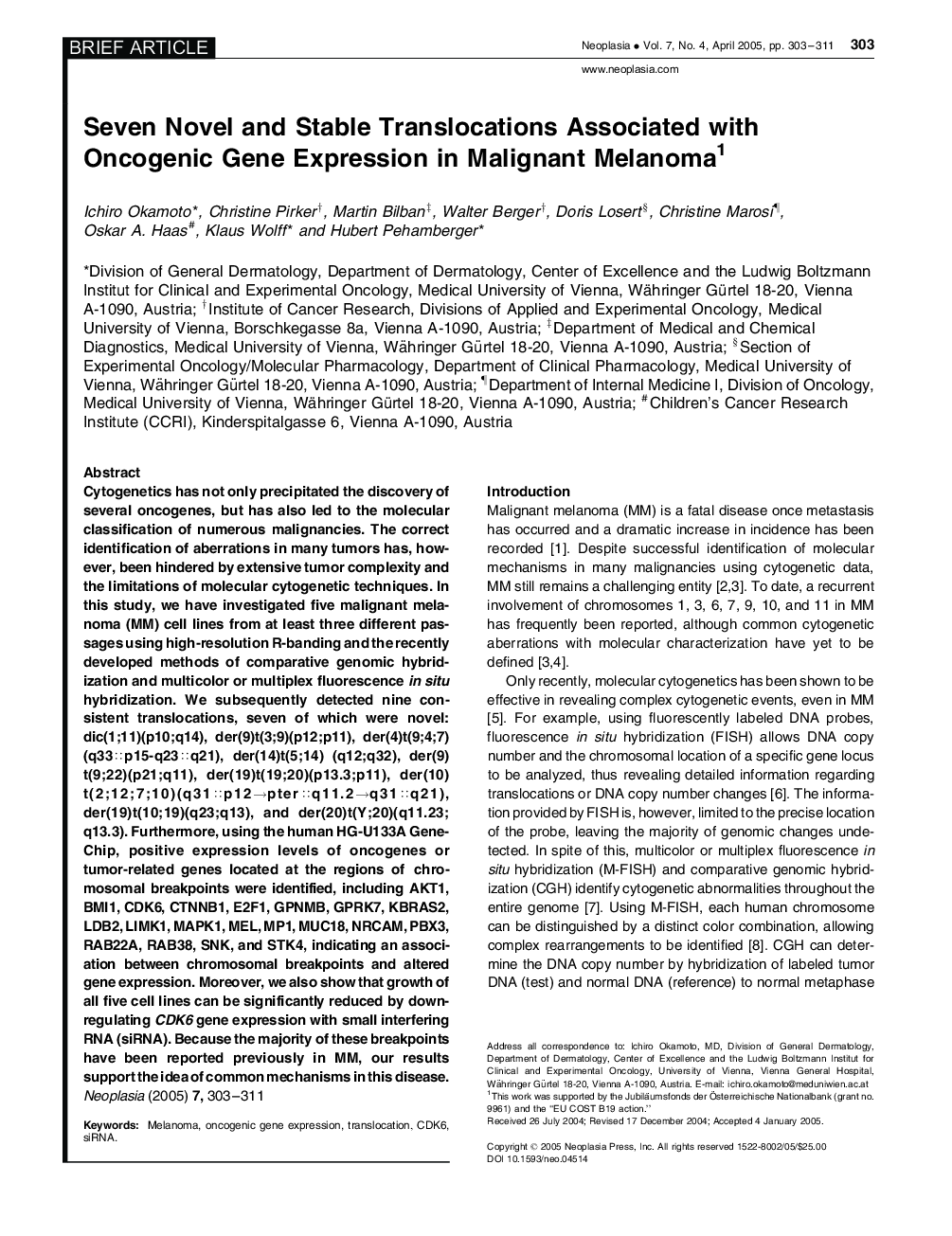| Article ID | Journal | Published Year | Pages | File Type |
|---|---|---|---|---|
| 10915466 | Neoplasia | 2005 | 9 Pages |
Abstract
Cytogenetics has not only precipitated the discovery of several oncogenes, but has also led to the molecular classification of numerous malignancies. The correct identification of aberrations in many tumors has, however, been hindered by extensive tumor complexity and the limitations of molecular cytogenetic techniques. In this study, we have investigated five malignant melanoma (MM) cell lines from at least three different passages using high-resolution R-banding and the recently developed methods of comparative genomic hybridization and multicolor or multiplex fluorescence in situ hybridization. We subsequently detected nine consistent translocations, seven of which were novel: dic(1;11)(p10;q14), der(9)t(3;9)(p12;p11), der(4)t(9;4;7)(q33::p15-q23::q21), der(14)t(5;14) (q12;q32), der(9)t(9;22)(p21;q11), der(19)t(19;20)(p13.3;p11), der(10)t(2;12;7;10)(q31::p12âpter::q11.2âq31::q21),der(19)t(10;19)(q23;q13), and der(20)t(Y;20)(q11.23;q13.3). Furthermore, using the human HG-U133A Gene-Chip, positive expression levels of oncogenes or tumor-related genes located at the regions of chromosomal breakpoints were identified, including AKT1, BMI1, CDK6, CTNNB1, E2F1, GPNMB, GPRK7, KBRAS2, LDB2, LIMK1, MAPK1, MEL, MP1, MUC18, NRCAM, PBX3, RAB22A, RAB38, SNK, and STK4, indicating an association between chromosomal breakpoints and altered gene expression. Moreover, we also show that growth of all five cell lines can be significantly reduced by downregulating CDK6 gene expression with small interfering RNA (siRNA). Because the majority of these breakpoints have been reported previously in MM, our results support the idea of commonmechanisms in this disease.
Keywords
Related Topics
Life Sciences
Biochemistry, Genetics and Molecular Biology
Cancer Research
Authors
Ichiro Okamoto, Christine Pirker, Martin Bilban, Walter Berger, Doris Losert, Christine Marosi, Oskar A. Haas, Klaus Wolff, Hubert Pehamberger,
